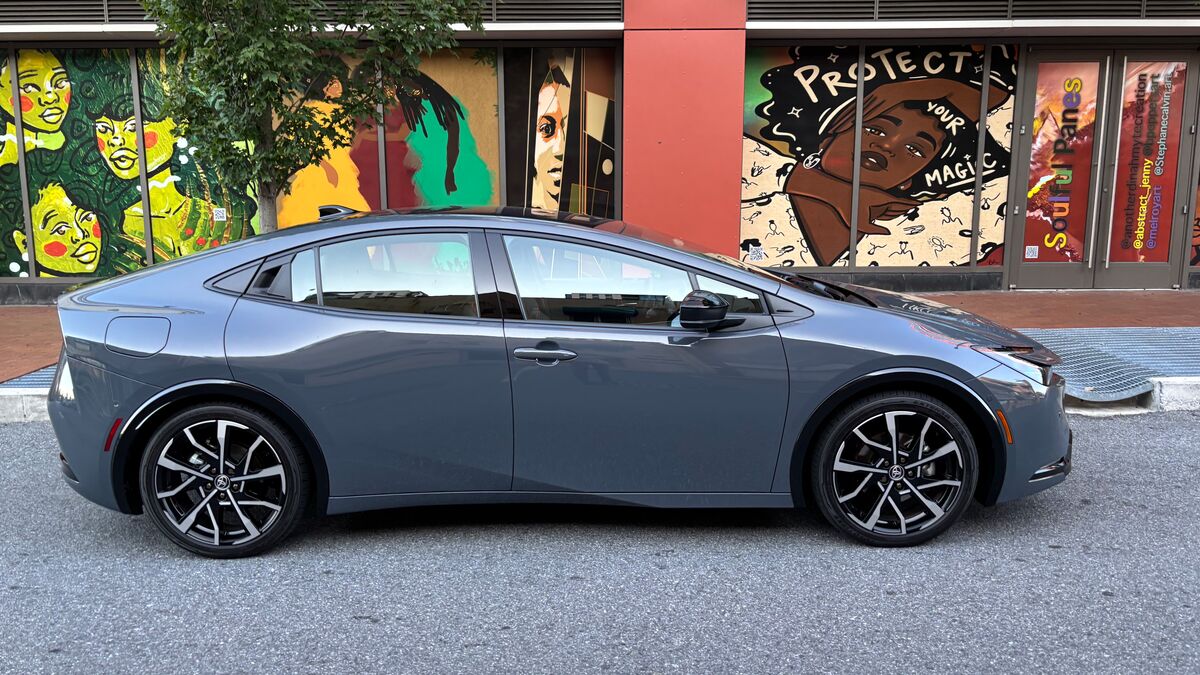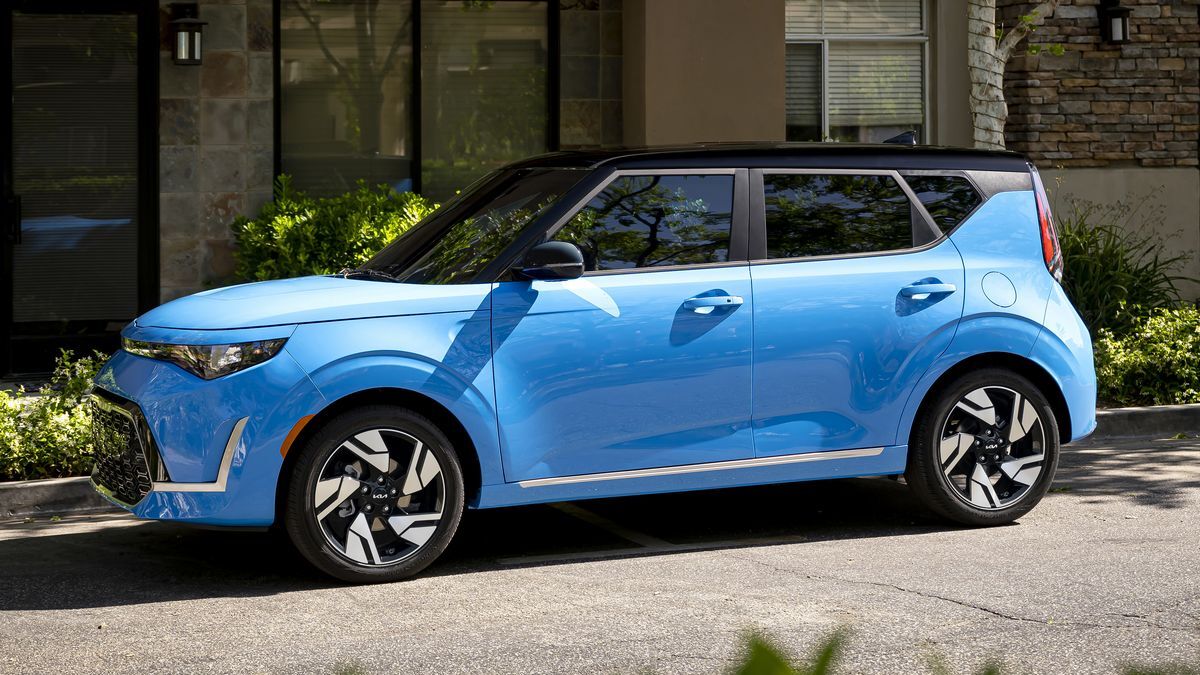My job as a car reviewer is fun when I get to surprise you, but the truth is, it’s probably better news for the average car shopper if cars work pretty much as you expect them to. So I have the least shocking piece of information to convey — you’re right about the Toyota Prius.
I spent a week in the 2025 Toyota Prius Plug-In Hybrid (PHEV) Premium and found it a pleasant, very well-made, fuel-sipping hatchback that would suit most individuals and small families quite well for a reasonable price.
If you haven’t had a reason to pay attention in recent years, it might surprise you a little to hear that the current Prius is quite attractive. A drastic makeover for the 2023 model year made Toyota’s classic hybrid sportier and sleeker, and the plug-in version shares its sharp styling.
Which Trim Level
Toyota builds the Prius as a hybrid and a PHEV. The latter can drive up to 45 miles on electricity alone before using gasoline, and recharge from a standard wall plug. Drivers can also use a Level 2 electric vehicle (EV) charger, though not the faster Level 3 chargers found at many highway rest stops. Since you can power your PHEV on gasoline alone for long trips, the inability to use those high-speed chargers isn’t really meaningful.
My tester was the Premium model — the most expensive of three available trim levels. It’s no luxury car — even the high-end models get just eight speakers and SofTex faux leather. But niceties like heated and ventilated front seats make it quite comfortable.
Toyota included one feature I’d skip. An optional solar roof adds power so slowly that it isn’t worth its price. It’s a nice idea, and perhaps someday solar cells will be efficient enough to recharge a parked car effectively. But I ran the battery to zero, left the car in the sun for 48 hours, and found that the roof had added one mile of range.
New 2025 Toyota Prius Plug-in Hybrid Prices
|
Retail Price
|
Fair Purchase Price (27549)
|
|||
|---|---|---|---|---|
$34,510 |
TBD |
|||
$37,760 |
TBD |
|||
$41,205 |
TBD |
Favorite Feature
My favorite feature of the Prius PHEV is a simple matter of thoughtful design. Toyota placed the driver’s instrument screen above the steering wheel. No matter how I adjusted the steering wheel, it never blocked my view of anything important.
Most automakers in 2025 try to impress shoppers with huge screens placed so that the steering wheel blocks your view of large parts of them. Toyota engineers thought more about what was practical and useful in the Prius PHEV than what was trendy.
In an era when the average car on American roads is now pushing 13 years old, avoiding fads and planning for usability is refreshing.
A tiny grace note to illustrate the point — the floormats in the Prius PHEV Premium are carpeted, but with a soft plastic patch where your right foot rests. You won’t wear a hole in it through daily use the way drivers often do with floormats. They planned for you to drive this car for a long time, and I appreciate the consideration.
What It’s Like to Drive
The PHEV is the sportiest Prius. Where hybrid models get 194 horsepower, the plug-in version gets a full 220 hp from a 4-cylinder engine mated to an electric motor. Both power the front wheels.
It’s surprisingly quick, with a zero-to-60 time of six seconds — the kind of figure many sports cars claimed just a decade ago.
Steering effort is extremely light and won’t convince you you’re in a sports car. It’s tuned to make driving as low-effort as possible, and the tuning works. The ride is unremarkable, which is a bit of an improvement compared to its history. The low rolling resistance tires of hybrids could give older Priuses a slightly harsh ride. That’s gone here — this is composed and comfortable.
The brakes capture energy to recharge the battery, but feel as close to ordinary disc brakes as possible. You’ll find the Prius PHEV a comfortable commuter you rarely have to think about, which is exactly what most shoppers considering one are likely looking for.
Interior Comfort and Technology
Toyota makes no attempt to pass off the Prius as a Lexus, but it’s quite comfortable for what it is. Toyota’s SofTex faux leather is soft and wears well over time. The central touchscreen is 12.3 inches and feels large for a subcompact cabin.
Strangely, even the high-end Premium model lacks dual-zone climate control.
But wireless Apple CarPlay and Android Auto are standard, as is a Qi-compatible wireless charging pad that actually added some charge to my iPhone 15 even while it provided streaming entertainment and directions. Many wireless charging pads in cars can only keep a phone in its current state of charge while it’s working.
Toyota thinks you might be checking your phone at stoplights, though. Ambient lights in the dashboard flash gently when the car ahead of you starts to pull away at a stoplight, as if to prompt you to put your phone down and drive.
Limitations
Often, Toyota’s top-of-the-line trims are virtually Lexus products. That isn’t true here. If you want roughly this car but with a more luxurious sound system and other high-end appointments, consider the Lexus UX. It’s built on the same platform and comes as a hybrid, but there is no PHEV version of the UX.
Key Considerations
The Prius has been an efficient, affordable answer that keeps its resale value better than its competitors for millions of owners. But it’s small. If you want that Toyota reliability and PHEV flexibility with more usable space, the RAV4 PHEV isn’t much more expensive, gives you far more cargo space, and lets you see over traffic.








